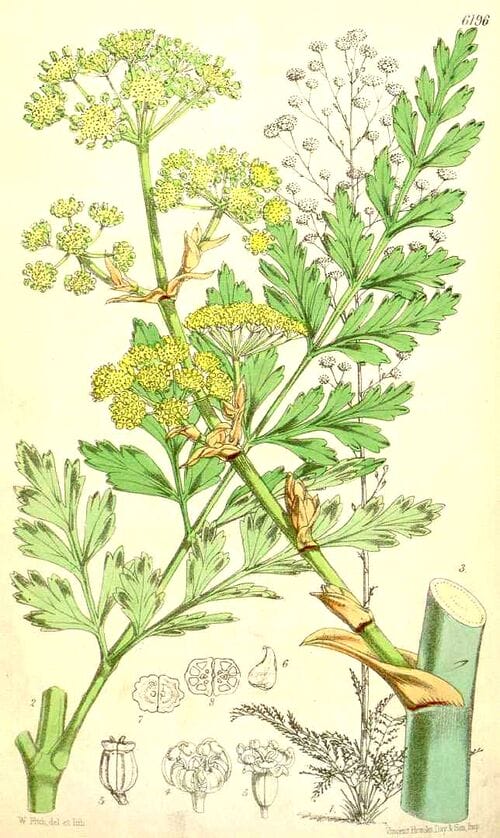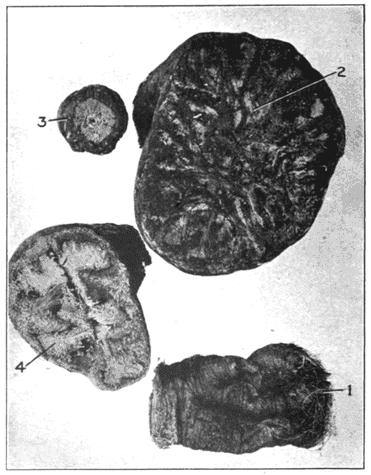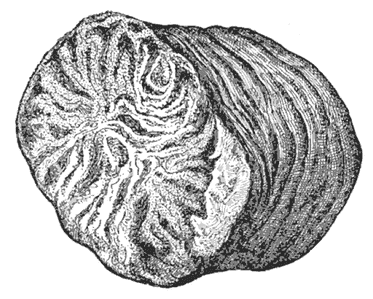Ferula sumbul, Musk rootSumbul, SambalaRishah-i-kalafs (Unani) Sumbuluttib (Arabic) |

|
 Curtis, W., Curtis’s botanical magazine (1800-1948)
Curtis, W., Curtis’s botanical magazine (1800-1948) Squibb’s Atlas of the Official Drugs, Mansfield, 1919
Squibb’s Atlas of the Official Drugs, Mansfield, 1919 Sumbul root
Sumbul rootNotes on Pharmacognosy, Otto Augustus Wall, 1902
Botanical name:
Ferula sumbul (syn. F. moschata)
Parts used:
Root and Rhizome
Temperature & Taste:
Warm, dry. Pungent, Bitter. Has a Musk-like odor
Constituents:
Volatile oil (0.2–0.4%), Resin (5–15%)
Coumarins inc. Umbelliferone
Sumbulic acid, angelic acid
Uses:
1. Settles Wind, Stops Spasms:
-Spasms, Convulsions, Epilepsy, Hysteria
-Nervous disorders
2. Clears Cold-Phlegm, Stops Cough:
-Bronchitis, Asthma
3. Moves the Blood:
-Amenorrhea, Menstrual cramps
Dose:
Powder: 500mg–2 grams
Tincture (1:5 in 45%): 2–4 mls.
Fluid Extract (1:1): 1–2 mls.
Dry Extract: 100–250mg
Comment:
1. This was not used traditionally, but was introduced into medicine in the mid ‘s as a substitute for Musk. (See History below)
2. Bombay or Indian Sumbul was an adulterant supplied by the roots of Dorema ammoniacum (the root of the plant supplying Gum Ammoniac). It was often colored and scented with a musk scent.
Substitute:
1. Sumbul root was introduced as a vegetable substitute for Musk.
2. Sumbul was regarded as similar to Valerian, which may substitute for it.
Main Combinations:
Major Formulas:
Cautions:
1. Avoid in Pregnancy
Main Preparations used:
Extract, Tincture
-
Extra Info
-
History
